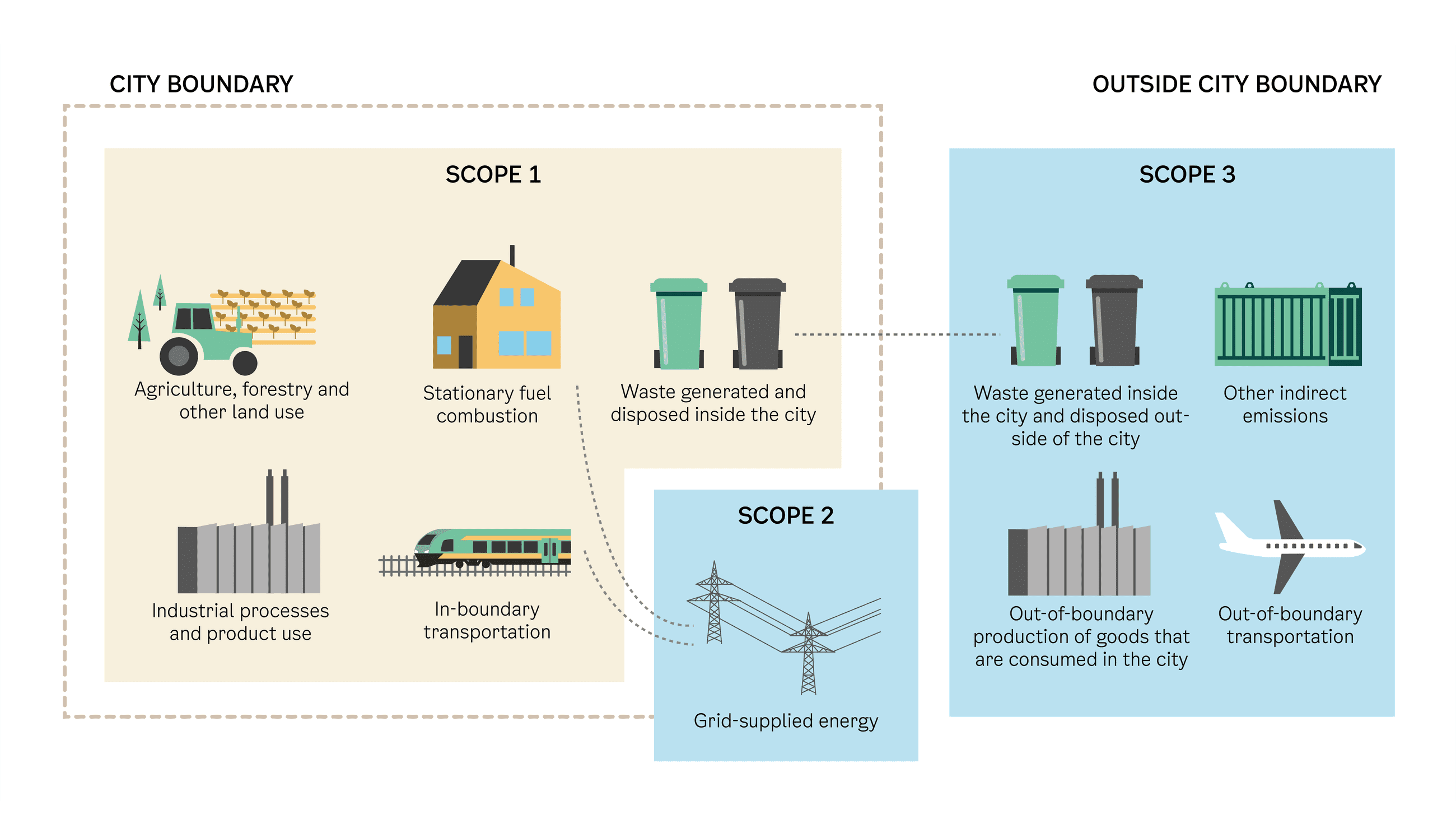Size: x-small
Type: color
Oslo’s Climate Budget 2022
2.2 Oslo’s climate targets
Oslo shall become a city virtually free from GHG emissions and a city that is better equipped to cope with climate change. In 2030, greenhouse gas (GHG) emissions in Oslo shall be reduced by 95 % compared with 2009. In proposition 109/20 Climate Strategy towards 2030, Oslo City Council adopted five main targets for its climate work. The Climate Strategy also includes a description of how these targets will be achieved. The five targets are presented in the box below. Sections 2.5-2.7 of this Climate Budget consider measures to reduce emissions within Oslo’s boundaries (target no. 1 in the strategy). The climate work to achieve the remaining targets is discussed in section 2.8.
The five targets of Oslo’s Climate Strategy towards 2030:
- Oslo’s greenhouse gas emissions in 2030 shall be reduced by 95 % compared with 2009, and by 52 % in 2023
- Oslo’s natural environment shall be managed in such a way that natural carbon storage in vegetation and soil is protected and the greenhouse gas removal in forests and other vegetation increase by 2030
- Oslo’s total energy consumption in 2030 shall be reduced by 10 % compared with 2009
- Oslo’s capacity to withstand climate change shall be strengthened towards 2030, and the city will be developed so that it is prepared for the changes projected by 2100
- Oslo’s contribution to greenhouse gas emissions generated outside the municipality shall be substantially lower in 2030 than in 2020
If Oslo achieves its climate targets, the city will make a significant contribution to Norway’s climate commitments. This will become even more important given the EU’s decision to raise its ambition level to an emission reduction of 55 % by 2030. Because Norway has an agreement to implement the climate target in partnership with the EU, the country’s target for emission reductions outside the ETS must also be raised. This essentially means that the climate plan presented by the Norwegian government this winter will not be sufficiently ambitious – stronger measures will be needed. Oslo and other major cities must deliver on this.
However, Oslo is also dependent on strengthened regional and central government instruments to achieve its climate targets. The most recent available emission inventory for Oslo dates from 2019, and shows a reduction of 16 % during the period from 2009 to 2019. However, there is reason to believe that the emission reductions have been greater than the figures suggest, as the Norwegian Environment Agency’s emission inventory only partially reflects the impacts of most of the measures in Oslo’s Climate Budget (see Chapter 2.4).
Main target 1 in the box above includes a secondary target for Oslo’s GHG emissions in 2023 to be reduced by 52 % compared with 2009. The target for 2023 is challenging, but the City Government is working purposefully to implement more measures or raise the level of ambition for existing measures, in order to bring us closer to achieving the target. With regard to this, the City Government notes that the Norwegian Environment Agency’s emission inventory should not be used in isolation as a way of assessing the attainment of targets, as the impacts of many climate measures are not reflected in the figures. As a result, it is very likely that the GHG emissions in Oslo indicated by the Norwegian Environment Agency’s emission inventory are overestimates. Measures which are implemented could also have a greater or earlier impact than expected.
